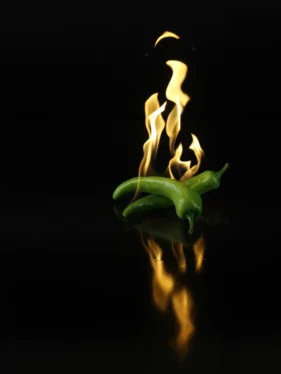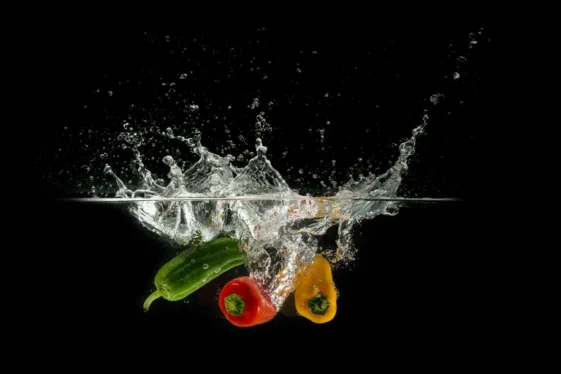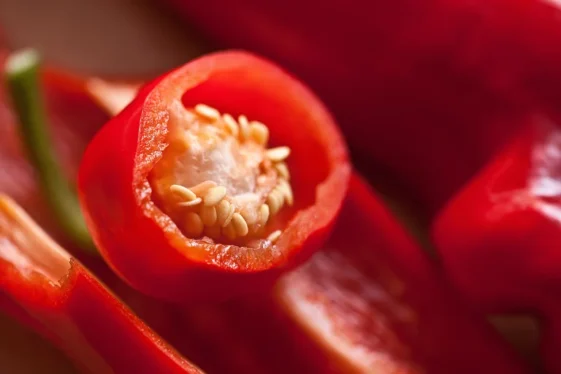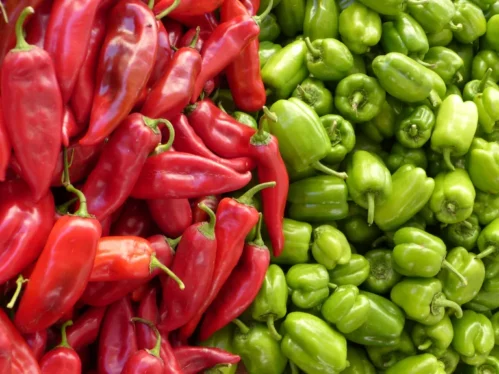- Your cart is empty
- Continue shopping
When it comes down to the Chilli, we are all divided on where we stand. Some of us love it till the tears come rolling down; while others do all they can to avoid it. Love it or hate it, this is a spice you simply can’t ignore. So here’s a Chilli lover busting some common myths for you!
#1 Chilli causes heartburn & acidity
To those who believe this, one can only say, the fault my friend is not in what you consume but how you consume it. Fried spicy food will give you heartburn and acidity. So will the consumption of fatty foods that are hard to digest. The tale of the humble Chilli in comparison has often been misunderstood.
Traditionally red-hot chilli peppers have been used for – hold your breath; aiding digestion! According to native wisdom in most Asian cultures ‘Capsaicin’, the active ingredient in Chilli has anti-inflammatory properties to heal several digestive conditions including gastric problems and killing bacteria that cause ulcers. For instance in North East India the Ghost Chilli or Bhoot Jholakia one of the spiciest chillies in the world, is used widely to cure stomach disorders.
This does not mean that you douse spoons full of Chilli everyday in the name of good health. It’s a spice to avoid if you are allergic to it or have been medically advised against eating it. For those of you, who are at the other end of the spectrum, do remember, they say, too much of a good thing can make you sick. Guess what, they are right!

#2 Water to the rescue to end that burning in your mouth
Believe it or not, water increases the burning caused by a powerful Chilli. According to research, pain receptors in your mouth also serve as neurons that detect heat and Capsaicin tricks these receptors to react in the same way as they would when the temperature in your mouth rises above 108 degrees Fahrenheit. Sipping water enhances the burning sensation as it spreads Capsaicin, which is not water soluble, to a wider area in your mouth.
The good news is that Capsaicin is known to dissolve in fat, starch and alcohol. Ignore the alcohol because intoxication can trick almost every part of your brain into believing anything. Let’s focus on starch & fat. Ever wondered how Asians consume potent chillies without bouncing off like yoyos? It’s because that Chilli is served on a bed of rice or starch that is absorbing Capsaicin in your mouth. Ditto with sugar & fat. That’s the reason why sugar water or dairy products help soothe that scorching feeling.

# 3 Avoid Chilli during summer & eat it in winter
Ever wondered why warm regions like Asia and South America consume more Chilli? It’s not just because it grows better in warm climate and is easily available there. The primary reason for using it in hot climates is to preserve food and increase its shelf life as high temperatures make it go bad quickly. That’s not all. Contrary to popular belief eating Chilli does not raise your body temperature further. People living in these regions believe that Chilli makes them sweat and hence helps them cool down faster as compared to cold food.
In colder climates it’s a whole different story. As opposed to common belief, Chilli is not consumed to proverbially ‘warm’ the body. Instead it is used to preserve food for longer periods and eaten to beat cold, flu, influenza etc., as it is rich in Vitamin C, b-carotene, bioflavonoids, anti-oxidants. In cold and foggy places like Sichuan in China, Chilli has traditionally been used to fight pathogens, considered to be the root cause of all health problems since ancient times.

# 4 Only good enough to eat?
Heard of Chilli balms or Capsaicin patches yet? If you’re new to this then you should know that for centuries, Capsaicin has been used as a topical analgesic. According to the Journal of Palliative Medicine, ‘Topical capsaicin has shown analgesic benefits in postherpetic neuralgia, painful polyneuropathies including diabetic and HIV-related neuropathy, and post mastectomy/surgical neuropathic syndromes.The capsaicin 8% patch is FDA approved for postherpetic neuralgia’.
This does not mean that you start applying Chilli topically. It’s clearly not a DIY solution. The report says that, ‘Capsaicin should not be used on open wounds. Major side effects are localized and include erythema and uncomfortable burning, stinging, or itching.’

So the next time you dread the mere thought of Chilli peppers or have that gut-wrenching feeling when you eat it, think again! Let’s get our love for Chillies going!

